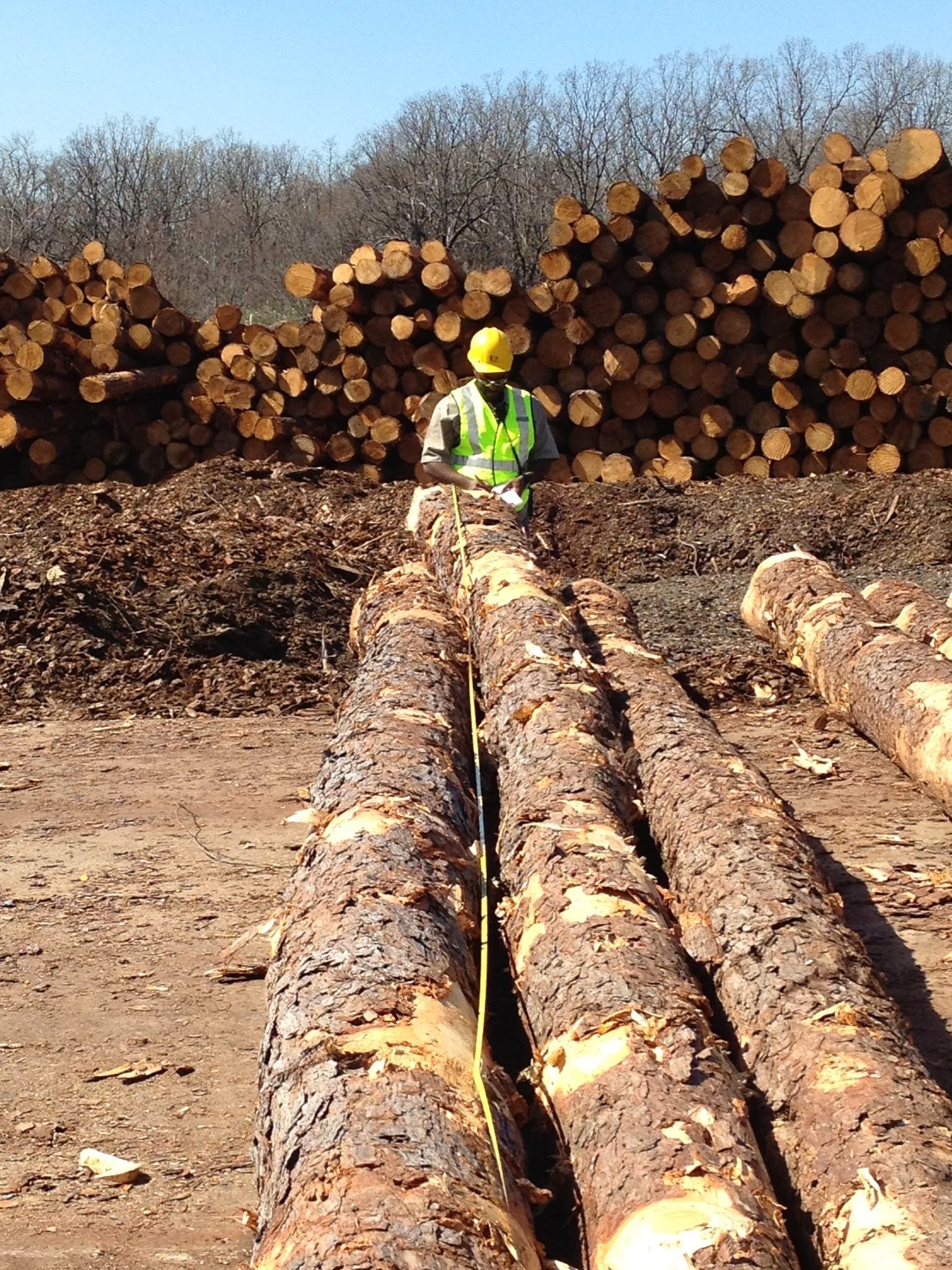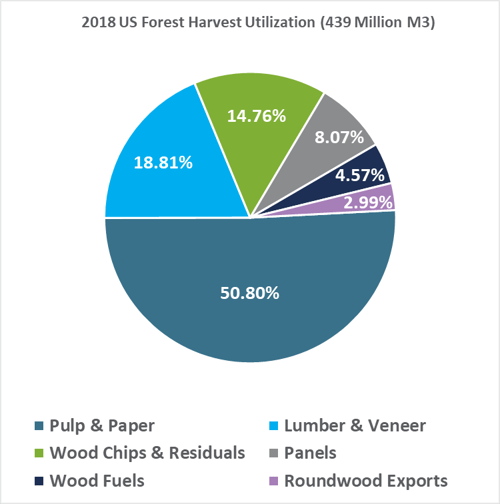
When it comes to the issue of managing America’s forests, environmental and economic concerns can often seem incompatible. Those unfamiliar with forestry and silviculture practices oftentimes approach this subject believing that there is either one advantage or the other, but not both.
This simply isn’t true, and any claim that America’s trees are used for anything less than their full potential is ill informed. Landowners manage their forests to maximize tree growth and their return on investment while at the same time providing wildlife habitat, protecting water quality, sequestering carbon and supporting a host of other environmental benefits. In turn, forest products companies use the trees that they buy from landowners to the fullest extent possible because it makes both financial and environmental sense.
How do we know this ecological/economic relationship works?
Per recent data from the US Forest Service’s Forest Inventory and Analysis (FIA) Program, forest and woodland area in the United States has stabilized at 823 million acres following decades of expansion. Forest and woodlands now comprise over one-third of the US landscape and contain 1 trillion cubic feet of wood volume despite a booming population and ever-sprawling urban centers.
Forest2Market’s in-depth analysis of historical data over the past six decades documents the link between increased demand for forest products and increased forest inventory. Further, it explains that the dramatic increase in forest inventory was made possible by even more remarkable increases in forest productivity, especially on privately-owned timberlands.
Where Does Harvested Timber Go?
To get an idea of how harvested timber is routed throughout the forest supply chain, it’s important to first recognize that the size, scale and economic impact of private, working forests on the US economy is tremendous. The total direct, indirect and induced employment effect associated with America’s private timberlands in 2016 (the most recent year for which data is available from the Forest Inventory and Analysis National Program) was around 2.5 million jobs, $109.4 billion in annual payroll and $288 billion in sales and manufacturing. As such, the sustainable harvest and regeneration of trees is of the utmost importance for the US forest industry.
In 2018 (the most recent year for which data is available from The Food and Agriculture Organization of the United Nations), nearly 439 million cubic meters (m3) of roundwood was harvested from American timberlands (both public and private) and used to manufacture a number of products that we have come to depend on in our daily lives including tissue and toilet paper, furniture and lumber, home and office utensils, biochemicals, and a host of other products.

How are Harvested Trees Used?
In the US South, pine trees are considered mature at 25-40 years old. Plantation stands of trees (acreages of trees that are continuously planted, harvested and replanted) are typically “thinned” when trees are 12-15 years old; thinnings remove only a portion of the stand’s smaller trees to make more room for the more desirable trees to grow larger.
When trees reach a diameter large enough to produce high-value wood products, a final harvest takes place. It’s important to note that the sizes of the trees removed during thinnings and final harvests are quite different. In general, the size of pine trees fall into the following categories that are measured by diameter at breast height (DBH):
- 5”-7” DBH: pulpwood
- 8”-11” DBH: chip-n-saw
- 12”+ DBH: sawtimber
As logs get larger, the per-ton value of the trees typically (but not always) increases; quality sawtimber that has a DBH of 18" is generally more valuable than 12" sawtimber, for instance.
The Economics of Wood Consumption
Basic forest economics and industry best practices ensure that harvested trees are used to maximize their value. Consider the price differential between sawtimber and pulpwood: In 1Q2020, the southwide volume weighted average price for pine sawtimber was $27/ton, and the southwide volume weighted average price of pine pulpwood was $9/ton.
Landowners choose to manage their timber for strategic reasons but in general, most landowners will not harvest small trees at $9/ton when they can harvest mature trees at 3x the price. Not to mention, the additional growth of the tree in the intervening years results in many more tons of sawtimber that can be sold at the higher price and turned into a higher-value wood product.
The following infographic illustrates typical forest inventory utilization in the US South.

Sawlogs, Veneer Logs & Related Products
The larger of the two trees in the above infographic is a long-leaf pine tree that is mature—between 25-40 years old. On the younger end of this spectrum, the tree would be considered sawtimber sized, ideal for lumber production. At the older end of the spectrum, this tr ee might be appropriate for the production of plywood or veneer. Older trees have grown to the large diameter size needed to create large sheets of wood by peeling the tree from the outside in. These sheets are used as the layers (or plies) of plywood or as veneer to cover furniture or cabinets.
ee might be appropriate for the production of plywood or veneer. Older trees have grown to the large diameter size needed to create large sheets of wood by peeling the tree from the outside in. These sheets are used as the layers (or plies) of plywood or as veneer to cover furniture or cabinets.
The portion of a mature tree that can be used for the production of these products comprises the vast majority of the tree’s volume. It is from this section of the tree that longstanding wood products (building products, furniture, etc.) are made—products that continue to store part of the tree’s carbon stock for decades.
Because timber is sold by the ton in the South, it is the value in this part of the tree that signals timberland owners to sell. Sawtimber, plylogs and veneer logs are among the highest value products that come out of the forest. Therefore, for a vast majority of timberland owners, whole mature trees are typically only harvested when they are large enough to bring higher prices.
Pulpwood, Fuelwood & Related Products
The rest of this mature tree, labeled “Pulpwood, Fuelwood & Other Products,” is too small in diameter to make lumber. Once the tree has been harvested for large-diameter material, the rest of the tree can be used to make a wide range of products that also continue to store carbon well into the future, such as oriented strand board (OSB) and a variety of pulp and paper products, including cardboard boxes and other packaging materials that can be recycled. This section of the tree can also be chipped and used as fuelwood for electricity generation or dried and formed into wood fuel pellets.
Utilized Top & Residual Volume
The rest of the mature tree is often called harvest slash. It is made up of the top, limbs and pine needles. In general, this material serves one of two purposes:
- Forest best management practices (BMPs) require that roughly one-third of this material be left on the forest floor to prevent erosion, nourish the soil and provide habitat for wildlife.
- The remainder is often used by sawmills, pulp and paper mills and pellet facilities to generate heat and electricity to run their operations. Some even sell excess electricity back to the power grid.
Pulpwood or Unmerchantable
Since lumber can be most efficiently produced from trees with straight trunks, the tree on the right is not suitable for lumber production. As a result, many of the smaller curved and low-vigor trees on a stand of managed timber will be removed during a thinning and sold as pulpwood. Remaining trees—both large and small—that contain bends, twists, hollowed centers or other defects will be removed during a final harvest along with the sawtimber.
Over time, the forest industry has improved technology and expanded into new areas just to make sure that trees harvested on their behalf are highly utilized. In the 1990s, for instance, it took the average sawmill 5.0 - 5.2 green tons of wood to make 1,000 board feet (1 MBF) of lumber. With the advent of a host of new technologies—including increased automation, continuous kilns and precision business information systems—the average today is 4 green tons of wood per 1 MBF, and some mills have even reduced their consumption to 3.5 green tons per 1 MBF.
In addition, companies throughout the forest industry have found creative means of using their waste streams. Decades ago, mills began running their kilns and other processes with their own wood waste instead of fossil fuels—a trend that is still widely practiced today. They installed wood boilers that use the bark, harvest slash, and other mill residues to generate the heat and electricity needed to dry lumber and wood chips or run paper machines. Last year, wood energy production in the US was over 2.4 quadrillion BTUs derived from roughly 200 million tons of wood.

The forest products industry—including solid wood, pulp, paper and energy products manufacturers—takes the harvesting and regeneration of trees very seriously. As noted above, the entire forest value chain has evolved over time to efficiently utilize every single part of a harvested tree. The result is an environmental/industrial relationship that produces valuable products that capture carbon and generates very little waste—all while providing wildlife habitat and protecting water quality. It is also a symbiotic relationship that, most importantly, ensures that forested lands remain working forests for future generations.






